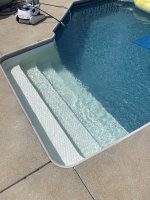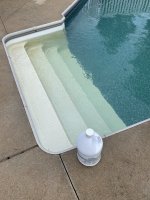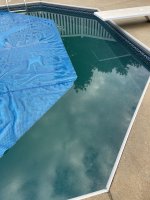I had a new sand filer, pump and and Hayward SWG installed this past June. Ever sense then I have been battling low chlorine levels, alge blooms, and metal staining (bad staining - it does remove with ascorbic acid but keeps coming back as soon as I add chlorine). So I am battling low chlorine and metal staining.
Here are the measurements:
FC: 0-1 (SWG at 100% - using liquid chlorine to offset the 0-1 that I get from the SWG)
CYA: 70 (this was lower- I just got it up this high yesterday)
AL: 100
PH: 7.2 (this has been fluctuating between 6.9 and 7.2, correcting with washing soda)
Phosphates: 1800-2000ppm
CA: 50
What I have done this far:
*slammed - Pool liner was heavily stained (pool looked medium brown)
*Let chlorine come down to 0 and added ascorbic acid
*added metal out sequesterant (stains are removed but is cloudy. Stains return after approximately 4 days).
never had these problems with my DE filter and no SWG in the past. Thanks for the help.

Here are the measurements:
FC: 0-1 (SWG at 100% - using liquid chlorine to offset the 0-1 that I get from the SWG)
CYA: 70 (this was lower- I just got it up this high yesterday)
AL: 100
PH: 7.2 (this has been fluctuating between 6.9 and 7.2, correcting with washing soda)
Phosphates: 1800-2000ppm
CA: 50
What I have done this far:
*slammed - Pool liner was heavily stained (pool looked medium brown)
*Let chlorine come down to 0 and added ascorbic acid
*added metal out sequesterant (stains are removed but is cloudy. Stains return after approximately 4 days).
never had these problems with my DE filter and no SWG in the past. Thanks for the help.



 One thing's for sure, the metal staining and/or algae is not a result of the new filter or SWG. It's definitely a chemistry issue. But first question - how did you get those test result numbers?
One thing's for sure, the metal staining and/or algae is not a result of the new filter or SWG. It's definitely a chemistry issue. But first question - how did you get those test result numbers? So we can prioritize things. Unless you wish to exchange water first (i.e. have fresh water trucked in), you have to tackle the algae via the
So we can prioritize things. Unless you wish to exchange water first (i.e. have fresh water trucked in), you have to tackle the algae via the 

